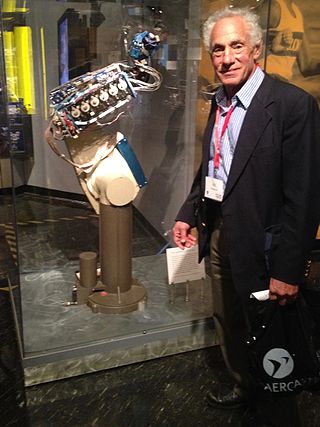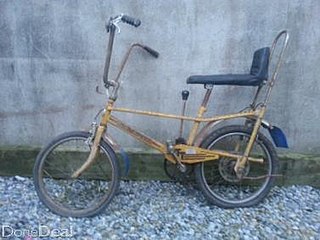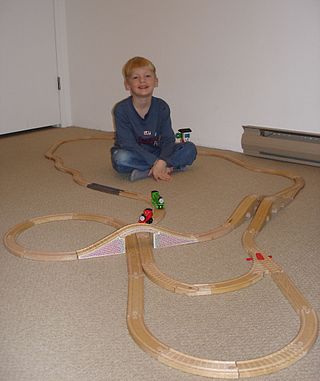This article needs additional citations for verification .(October 2017) |

A wind-up toy is an automaton toy powered by a clockwork motor. [1]
This article needs additional citations for verification .(October 2017) |

A wind-up toy is an automaton toy powered by a clockwork motor. [1]
Automata built for the sake of art, amusement, and simulation have been described since antiquity, in cases such as Heron of Alexandria designing clockwork birds during the Hellenistic Period. [2] Leonardo da Vinci is frequently credited with constructing a mechanical lion, which he presented to King Francois I in Lyon in 1515. Although no record of the device's original designs remain, a recreation of this piece is housed at the Château du Clos Lucé. [3]
Some misinformation exists with regards to Regiomontanus's contribution, and his supposed construction of a flight-capable mechanical eagle and fly, which are frequently credited as the first wind-up toys. This story of an eagle which flew from Nuremberg to greet Friedrich III, alongside that of a fly which could circulate the room before returning to its inventor's hand, was spread by Petrus Ramus after a visit to Nuremberg in 1571, and is apparently false. [4] Furthermore, various internet sites instead credit these inventions to a Karel Grod, [5] but little evidence suggests he exists.
René Descartes may have attempted to build some automata. According to legend, a life-sized wind-up human girl was discovered in his luggage aboard a ship in which he was traveling to Sweden, and was thrown overboard by order of the ship's Captain. [1]
After the larger, elaborate wind-up machine art declined in interest, wind-up toys were created cheaply in large numbers by the 1800s. Wind-up machines became known as wind-up toys, and were designed in different forms to move around. [1] European toy makers created and mass-produced the first wind-up tin toys during the late 1880s.[ citation needed ] Over the next 60 to 70 years, more manufacturers created more intricate designs. The trend stopped with the introduction of the small and inexpensive Alkaline battery in the 1960s, which allowed motors to run without a wind-up mechanism. Over the next 20 years, wind-up toys lost popularity.[ citation needed ]
Plastic wind-ups started in 1977 when the Japanese company Tomy made a walking Robot (Rascal Robot).[ citation needed ] Tomy's ability to build small precise plastic gears and parts allowed them to reduce the size of the gearbox (housing the spring drive).

A robot is a machine—especially one programmable by a computer—capable of carrying out a complex series of actions automatically. A robot can be guided by an external control device, or the control may be embedded within. Robots may be constructed to evoke human form, but most robots are task-performing machines, designed with an emphasis on stark functionality, rather than expressive aesthetics.

Clockwork refers to the inner workings of either mechanical devices called clocks and watches or other mechanisms that work similarly, using a series of gears driven by a spring or weight.
Meccano is a brand of model construction system created in 1898 by Frank Hornby in Liverpool, England. The system consists of reusable metal strips, plates, angle girders, wheels, axles and gears, and plastic parts that are connected using nuts and bolts. It enables the building of working models and mechanical devices.

An automaton is a relatively self-operating machine, or control mechanism designed to automatically follow a sequence of operations, or respond to predetermined instructions. Some automata, such as bellstrikers in mechanical clocks, are designed to give the illusion to the casual observer that they are operating under their own power or will, like a mechanical robot. The term has long been commonly associated with automated puppets that resemble moving humans or animals, built to impress and/or to entertain people.

A scale model is a physical model that is geometrically similar to an object. Scale models are generally smaller than large prototypes such as vehicles, buildings, or people; but may be larger than small prototypes such as anatomical structures or subatomic particles. Models built to the same scale as the prototype are called mockups.

Mechanical toys are toys powered by mechanical energy. Depending on the mechanism used they can perform a range of motions, from simple to very complex.

Schuco is a German brand and former manufacturing company founded in 1912 by Heinrich Müller and the businessman Heinrich Schreyer in Nuremberg, popularly known as Germany's toy capital. The company's specialty was making toy reproductions of cars and trucks in tin, plastic and die-cast. The company went bankrupt in 1976 but was reorganized in 1993 and then totally independent again by 1996 before its acquisition by the Simba Dickie Group in 1999.

Victor David Scheinman was an American pioneer in the field of robotics. He was born in Augusta, Georgia, where his father Léonard was stationed with the US Army. At the end of the war, the family moved to Brooklyn and his father returned to work as a professor of psychiatry. His mother taught at a Hebrew school.

Tomy Company, Ltd. is a Japanese toy company. It was established in 1924 by Eiichirō Tomiyama as Tomiyama Toy Manufacturing Company (富山玩具製作所), became known for creating popular toys like the B-29 friction toy and luck-based game Pop-up Pirate. In 2006, Tomy merged with another toy manufacturer, Takara, and although the English company name remained the same, it became Takara Tomy in Asia. It has its headquarters in Katsushika, Tokyo.

Lines Bros Ltd was a British toy manufacturer of the 20th century, operating under the Tri-ang Toys brand name.
The Brave series is a Japanese toy and anime franchise originally produced by Sunrise, Nagoya TV, Victor Entertainment and Tokyu Agency, originally created by Takara. The franchise ran from 1990s to 2000s, producing eight official series and several side media including Original Video Animations (OVAs), toys, and several memorabilia in Japan. It was one of Sunrise's most notable productions in the 90s, and its run played a key role in the reintroduction of the Super Robot genre to the Japanese mainstream.

Robotic art is any artwork that employs some form of robotic or automated technology. There are many branches of robotic art, one of which is robotic installation art, a type of installation art that is programmed to respond to viewer interactions, by means of computers, sensors and actuators. The future behavior of such installations can therefore be altered by input from either the artist or the participant, which differentiates these artworks from other types of kinetic art.
The Omnibot (オムニボット) is a toy robot originally manufactured by Tomy in the mid-1980s. The name then came to apply to the successful line of robots manufactured by the company. The initial Omnibot was announced with expectations of restoring popular interest in robots, at a time when it was becoming obvious that robots with advanced AI such as R2-D2 were still a long way away. A more advanced version of the Omnibot was called the Omnibot 2000 and did not have a plastic bubble over its head. With the success of the Omnibots, the Omnibot range quickly expanded. After the video game crash of 1983 and its debilitating effect on the nascent home electronics industry, the Omnibot faded away but it was revived in the early 2000s. The latest version of the Omnibot is the i-SOBOT.

Merchandise for the Thomas & Friends has been produced to capitalize on the success of the television series Thomas & Friends. Whilst merchandise was produced alongside due to the popularity of the first of The Railway Series by the Rev. W. Awdry since 1945, and the original broadcast of the television series in 1984 in the United Kingdom, large numbers of manufacturers have sought to produce Thomas-branded items after the television series was broadcast in the United States and Japan.

The history of robots has its origins in the ancient world. During the Industrial Revolution, humans developed the structural engineering capability to control electricity so that machines could be powered with small motors. In the early 20th century, the notion of a humanoid machine was developed.

Mario Taddei is an Italian academic. He is an expert in multimedia and edutainment for museums, a Leonardo da Vinci devotee and scholar, and an expert in the codexes and machines of da Vinci and ancient books of technology.

The harpsichord-viola is a hybrid musical instrument based on the designs of Leonardo da Vinci on folio 93r of the Codex Atlanticus. It's a different project from the viola organista. It is about the size of a child's toy piano. It weighs 33 pounds and straps to the musician's chest. It's unlike anything else in the orchestra. It has the strings of a violin but is played with a keyboard, and it's powered by the musician's legs as he walks. It's built with the materials that Leonardo would have had on hand, including wooden pegs and gears run by twine. In the folio of Leonardo, you can see that the instrument has a harness. So it was invented as a way to play a stringed instrument while marching. The leg pumps a wooden motor, which moves a long loop of horsehair through the instrument. When the player presses the keys, the strings move up against the loop.

The Mechanical Galleon is an elaborate nef or table ornament in the form of a ship, which is also an automaton and clock. It was constructed in about 1585 by Hans Schlottheim in southern Germany. It was in the possession of Augustus, Elector of Saxony. The model is now in the British Museum in London. Two other similar models are located in museums in France and Austria, the Château d'Écouen and the Kunsthistorisches Museum.

Mettoy was a British manufacturing company founded in 1933 by German émigré Philip Ullmann, who was later joined by South African-born German Arthur Katz who had previously worked for Ullmann at his toy company Tipp and Co of Nuremberg. The firm made a variety of lithographed metal wind-up toys. Both Jewish, they moved to Britain following Hitler's rise to power in 1933.

Leonardo3 is an interactive museum and exhibition center at Galleria Vittorio Emanuele II, Piazza della Scala, Milano, Italy. The museum was inaugurated in 2013, and is devoted to Italy’s notable personality Leonardo da Vinci, who is portrayed both as an artist and inventor.